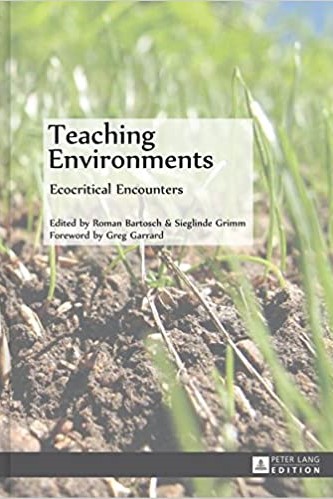Teaching Environments: Ecocritical Encounters
Chapter: Ecocritical sensitivity with multimodal texts in the EFL/ESL literature classroom
- Contributor
- Editors
- Publisher
- Year
- ISBN
- Language
- Janice Bland
- Roman Bartosch & Sieglinde Grimm
- Peter Lang
- 2014
- 9783631638507
- English
Book Description
The essays in this collection seek to bring together current developments in ecocriticism and the pedagogical practice of teaching English at all levels, from primary schools to Higher Education. They cover theoretical and practical discussions of the nexus between the sciences and the humanities and maintain that the notion of the two cultures be refused for good, they argue for the inclusion of particular texts or theoretical perspectives, and they suggest ways to teaching environments on different levels of language competence and in the context of historical and transdisciplinary encounters with ecology, nature, and animals. Despite this variety, they share some common threads and engage with questions that are highly relevant for teaching in general and have acquired even more relevance in our rapidly changing and posthumanist teaching environments: How do we raise consciousness without preaching? What kind of critical attitude is required for the empowerment of our pupils and students? How do we actually imagine encounters between the sciences and the (post)humanities, and which texts, what kind of texts, and which approaches will prove most fruitful?
Chapter Description
Ecocritical sensitivity with multimodal texts in the EFL/ESL literature classroom by Janice Bland
This chapter considers whether the use of children’s literature in language education can support an eco-consciousness, as possibly the first step towards pragmatic environmentalism. Major children’s literature often deals with themes that are invaluable for a critical, dialogic pedagogy, and this chapter puts forward opportunities for ecopedagogy with young learners and novice secondary students, who are not yet fluent readers of extended prose in English.


